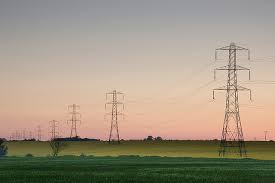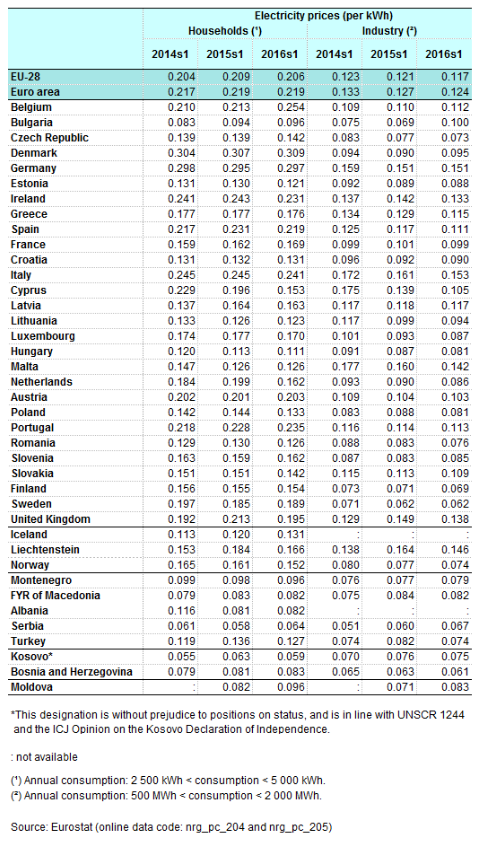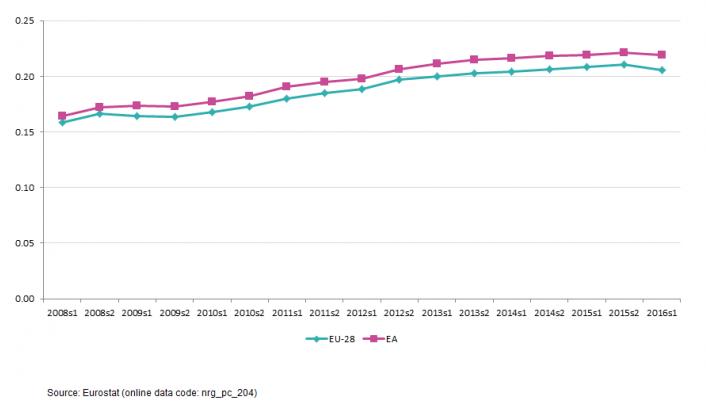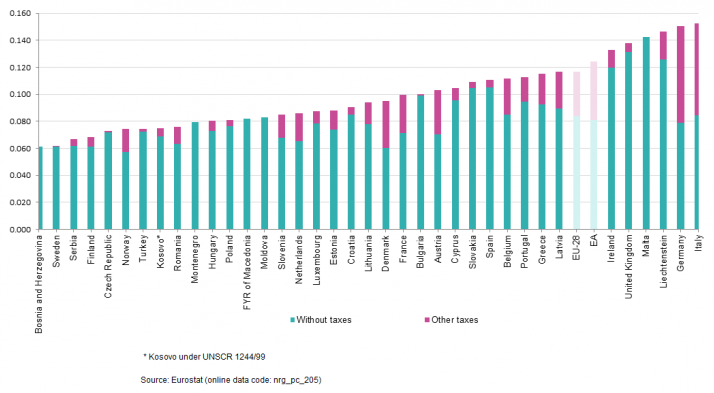The evolution of electricity prices within the European Union; The countries with the highest and lowest electricity prices

Eurostat has published stats regarding the evolution of electricity prices both for industrial and household consumers within the European Union (EU), but includes also price data from Norway, Liechtenstein, Iceland, former Yugoslav Republic of Macedonia (FYROM), Albania, Bosnia and Herzegovina, Montenegro, Serbia, Turkey, Moldova and Kosovo (under UN Security Council Resolution 1244).
The price of energy in the EU depends on a range of different supply and demand conditions, including the geopolitical situation, import diversification, network costs, environmental protection costs, severe weather conditions, or levels of excise and taxation. Note that prices presented in this article include taxes, levies and VAT for household consumers, but exclude refundable taxes and levies and VAT for industrial/business users. An overview of the average prices in euro per kilowatt hour of electricity for the last 3 years (first semester for each year) is given in Table 1.
Main statistical findings
Electricity prices for household consumers
For medium size household consumers, electricity prices during the first semester of 2016 were the highest in the EU in Denmark (EUR 0.309 per kWh), Germany (EUR 0.297 per kWh) and Belgium (EUR 0.254 per kWh) (see Table 1). The lowest electricity prices in the EU for households were found in Bulgaria (EUR 0.096 per kWh), Hungary (EUR 0.111 per kWh) and Estonia (EUR 0.121 per kWh). The price of electricity for households in Denmark was more than 3 times higher than the price in Bulgaria.
The EU-28 average price (this price is weighted with the most recent national electricity consumption in the household sector which was data for 2014) is EUR 0.206 per kWh.
Figure 2 shows the trend of the EU-28 and EA electricity prices for household consumers over the last 8 1/2 years. Electricity prices for households increased in 2008, remained stable or even decreased in 2009, went up again as of 2010, but decreased slightly in 2016.
The largest price increase among EU Member States between the first semester of 2015 and the first semester of 2016 was observed in Belgium (+20 %), while prices went significantly down in Cyprus (-22%) and the Netherlands (-18%).
Electricity prices for industrial consumers
For industrial consumers, electricity prices during the first semester of 2016 were the highest in Italy and in Germany (see Figure 6).
The EU-28 average price (this price is weighted with the latest available (2014) national consumption for industrial consumers) was EUR 0.117 per kWh.
Electricity prices for this sector increased in 2008 and during the first semester of 2009, decreased during the second semester of 2009, went up again between 2010 and 2014. From the second semester of 2014 onwards a decreasing trend can be observed.
Read the Full statistics Report HERE
Source: eurostat – Electricity price statistics
































